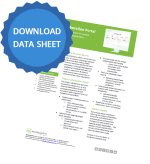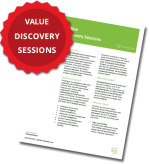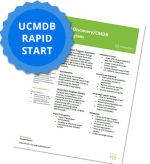12 Lean Principles to Enhance Your SAP Implementation
By: Matt Angerer
Traditionally, SAP implementations occur in traditional, waterfall timelines. One step occurs after the other, resulting in a linear process that offers little flexibility and can quickly blow through the intended time frame.
As a result, 75% of software implementations fail. The reasons vary wildly, but can ultimately be tied back to approaches that are either a) too stringent or b) lose sight of their core goal. However, by embracing a more agile approach, you can help speed up and guarantee your implementation projects.
HP Enterprise Software now offers more advanced platforms like Application Lifecycle Management (ALM) Octane to help transform your traditionally waterfall SAP projects into Agile ones. Still not convinced that you want to go “all in” with Agile? That’s fine too. Continue leveraging more time-tested platforms like Quality Center (QC) that offer real-time integration to ALM.Octane. Taking a hybrid approach (not pure Agile, but not pure Waterfall) is what a lot of client organizations are doing these days. Integrating ALM.Octane with Quality Center requires a simple adapter to provide your team with the necessary visibility across each area of the project.
To celebrate the 12 Days of Christmas, we want to give you our 12 lean principles to enhance your SAP implementation. Interested in understanding more about how HPE’s tools can support these guiding principles? Don’t hesitate to reach out to ResultsPositive for a no-obligation demo and discussion today.
1) Prioritize Continuous Delivery
Continuous delivery is at the core of lean and agile software development. So naturally, it should play a major role in your SAP implementation as well. Make it your highest priority to satisfy project sponsors and end users through early and continuous delivery of a platform that actually solves their pain points and improves productivity.
2) Adjust to Changing Requirements
Don’t shy away from changes, even late in the development stage. If these suggestions are necessary for better software, completely embrace them. Agile processes harness change for maximum possible success; by incorporating them into your implementation, you can get one step closer to achieving the highest priority of a great piece of software.
3) Deliver Frequent Updates
This is perhaps the biggest difference between waterfall and agile implementation philosophies. Instead of leaving your stakeholders in the dark about the progress of your lean implementation, you provide regular updates that keep them informed about your progress. You might even want to grant access to the software before the implementation is finished in order to gather feedback and make improvements before it’s too late.
4) Build Working Relationships
No one on the implementation team should labor in isolation, be sure that everyone is working together to ensure processes are optimized towards a mutual goal. Periodically, you might also want to consider looping in project sponsors, who can provide encouragement and answer any questions on their intent that might otherwise have lead to confusion.
5) Motivate Your Team
Without a motivated team, your lean implementation will either fall apart completely or fail to reach its full potential. Providing an environment in which everyone on the team enjoys their work, and remains motivated to do their part is one of your foremost responsibilities. They need to feel your support and be able to trust you with any project issues. The occasional outing to bond the team can work well to keep motivation levels high.
6) Rely on Face-to-Face Interactions
Sometimes, it’s impossible to communicate face to face, but whenever possible, avoid electronic communications in managing and organizing your team. Collaboration tends to be much more productive when everyone is gathered in the same room; nonverbal cues can communicate as much information as the spoken word.
7) Measure Everything By Outputs
The desired outcome of your implementation is a working SAP platform that benefits your business. Everything within the implementation should be focused on that goal. Don’t let yourself be distracted by secondary goals or demands that come from outside the implementation, lest you invite confusion and complications into the project. The primary measure of your progress should always be how close your SAP platform is to being done.
8) Focus on Sustainable Implementation
Don’t rush ahead and risk burnout so early in the implementation process. Instead, move forward at a deliberate, sustainable pace that helps you maximize the potential of your team. Theoretically, everyone involved in the project – from implementation team members to sponsors and test users – should be able to maintain the same pace indefinitely without significant fatigue.
9) Build on Technical Excellence
Each member on your team is part of the lean implementation project because of a very particular set of skills. Your goal should be to maximize these skills, focusing the highest possible energy on the most important task. A database administrator should probably not be in charge of core code, just as a developer should not touch the relational database underlying the CRM.
10) Keep it Simple
Especially in a major implementation project, it’s tempting to get distracted by complicated developments and decisions. Instead, try to keep everything as simple as possible minimizing unnecessary work and maximizing only the most essential functions. By breaking everything down into smaller segments, your team can more easily tackle and accomplish the tasks at hand.
11) Create Self-Organizing Teams
A strict hierarchical structure wastes time, and stands in polar opposite to the lean implementation philosophy. Instead, create teams that are relatively autonomous, able to make decisions and own their choices based on free and open collaboration. The more independent your implementation group, the better.
12) Embrace Reflection Periods
Everyone on your team should have the opportunity to chime in on a regular basis as to how the implementation process is going. Encourage constructive feedback, both positive and negative. Then, build in permanent solutions that can adjust the implementation process according to the feedback given.
Using these principles you can significantly improve time spent on the implementation process and minimize the resources you need. Agile software development is proven to work, and its use in software implementations has led to similarly positive results. In fact, agile organizations meet their implementation goals and finish on time significantly more often than competitors using classic waterfall techniques.
Lean implementation principles will improve your time-to-value ratios, benefitting everyone involved, and teaching new principles of adaptability to your team. Contact ResultsPositive if you have any questions about implementations or the agile training courses we have on offer.
Subscribe for the latest RP Blog Updates:










